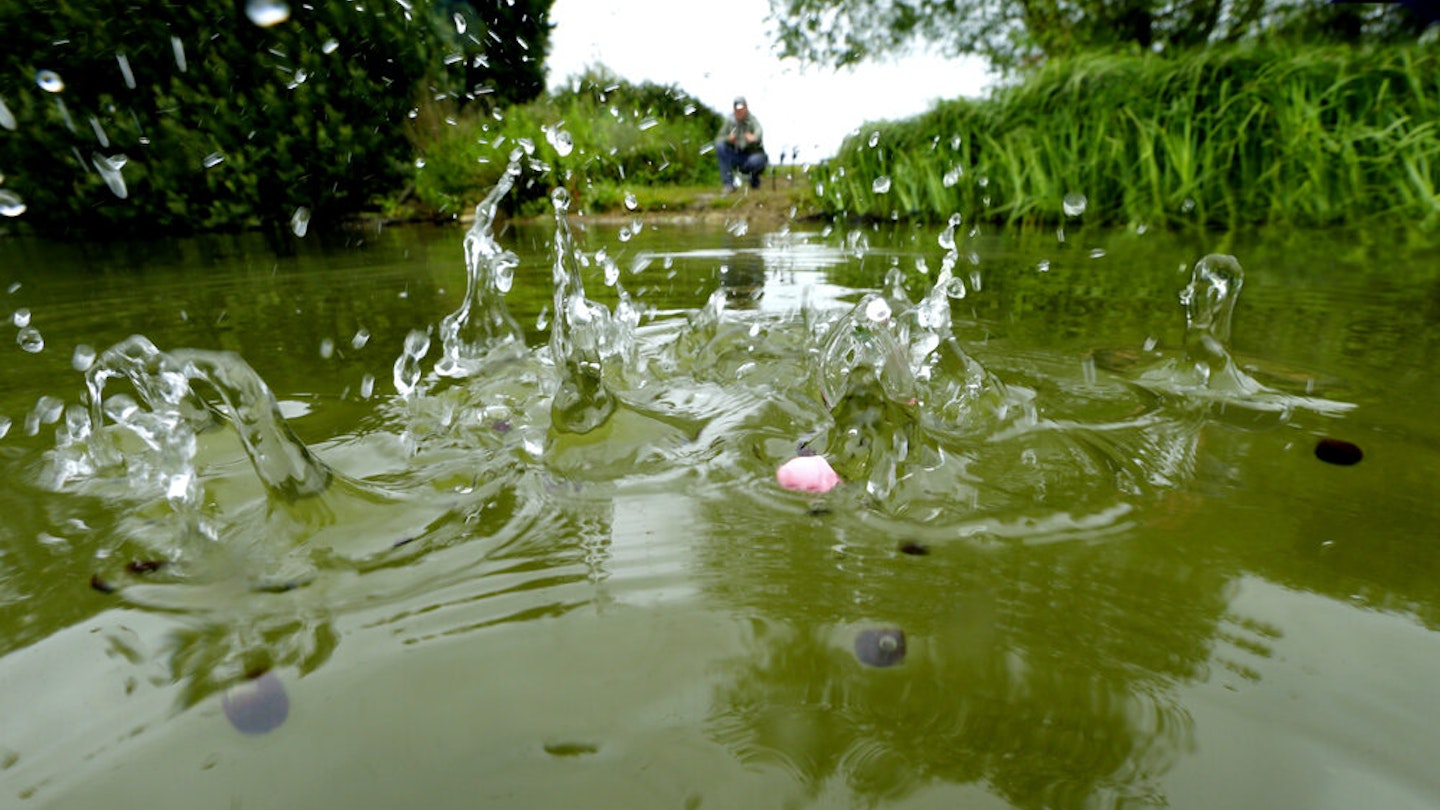WE’VE all been there. Hours pass without a bite so we pile in the feed to try to elicit a response. The bombardment often fails, though, and we don’t spare a second thought for the bait we’ve just introduced and the after-effects it may have.
Our presumption is that the resident fish will eventually hoover it all up, but the reality on some lakes is far different. If it stays untouched and begins to break down, the decomposing bait can leach potentially harmful chemicals into the water.
Nowhere have the effects of overfeeding been more evident recently than at Cambridgeshire’s Bluebell Lakes complex, where uneaten bait has released high levels of nitrates into the venue’s five gravel pits.
To try to reverse the damaging trend, management have now banned the use of bait boats and reduced the number of swims on each lake by up to 35 per cent.
Bluebell’s staffman Paul Waller tells us:
“There’s been a surge in angling pressure since we reopened and this has meant a lot of pellets and boilies have gone into the water.
“The problem is, with the hot weather prompting the carp to spawn instead of feeding hard, a lot of it has gone uneaten.
“This was becoming a cause for concern so we took water samples.
“The results revealed that all five pits contained high levels of nitrate, which can be dangerous as it feeds algae which, in turn, depletes the oxygen levels in the water.
“The decision to ban bait boats and cut down the number of swims on each lake was tough, but necessary to protect our highly-prized stocks.”

DOUBLE TROUBLE IN HOT WEATHER
Bluebell’s new rules will last for the rest of the year until the water quality stabilises, although the issue of high nitrate levels is normally more of a problem in the summer months, when excessive feeding paired with hot weather can prove a recipe for disaster.
Top fish biologist Simon Scott says:
“Carp are rather greedy fish and at times they’ll consume a lot of food, but if the water quality is not perfect then their appetite can diminish rapidly.
“If the oxygen level of the water is low due to hot weather, then there is a good chance that the carp might not eat a huge pile of food.
“The problem then occurs when anglers feed too much bait and it’s just left to rot on the bottom, which makes the water quality even worse.”

THE COMMERCIAL ANGLE
While there’s growing evidence that overfeeding on low to medium-stock lakes or gravel pits can pose a problem, what’s the situation on commercial venues, which often boast a far higher density of stocks?
The match waters at the Oaks Lakes in North Yorkshire have been producing 500lb-plus bags since fishing resumed, but venue’s owner Tom Kay says that there’s nothing to suggest that the bait thrown in by anglers isn’t getting eaten.
“We’ve had our issues with nitrate in the past, although since we’ve improved our aeration facilities, there hasn’t been a problem,” he tells us.
“I guess the difference between a commercial fishery and a natural one is that there are more fish and less natural food, so there’s a high chance that bait will get mopped up quickly.”
Despite not having any feeding restrictions on site, Tom has rules in place to help to monitor what goes into his lakes.
He adds:
“Anglers can only feed our own low-oil pellets, and all unused bait must be taken home or thrown in the bin after fishing.
“Yes, you can catch 300lb of carp by feeding heavily, but I’ve seen anglers do the same using just a bag of our 4mm feed pellets, so piling it in isn’t always the way.”

A DIFFERENT MINDSET
On the match fishing scene, the way you feed can sometimes mean the difference between winning or losing.
Last year’s Fish O’Mania winner Andy Bennett reckons adopting a reserved approach to feeding is always best.
He says:
“Commercials hold loads of fish and problems can develop if you overfeed at the start.
“Too much bait will draw too many fish into the peg, leading to liners and foul-hookers.
I always start feeding little-and-often and try to tempt a few bites before building the swim up from there.”

A similar approach is also the best bet on many specimen carp waters, according to Adam Penning.
“Most anglers think that the more bait they use, the more carp they’ll catch and, although this might be true occasionally, it’s a foolhardy approach on all but the most heavily-stocked venues,” he says.
“If fish are wary, then you can bet that they will know something is afoot when they come across a big bed of bait.”

